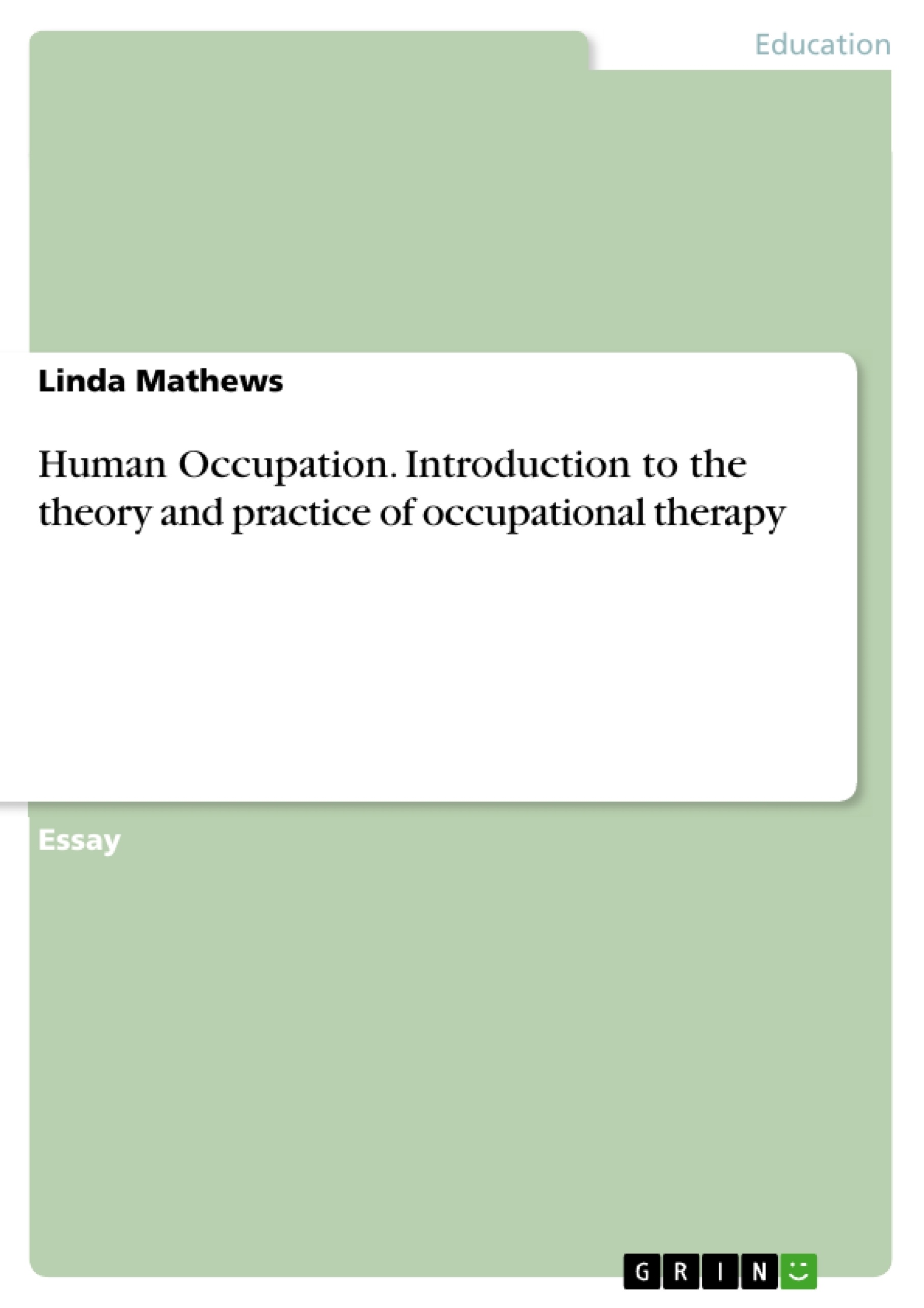The definition of the concept of quality of life (QOL) has long been debated with contributions varying according to the different scientific disciplines, including social sciences, psychology, geography, philosophy, health economics, advertising, medical science, and history (Bowling 1995; Faruqhar 1995, Liddle & McKenna 2000). Taking into account the difficulty of defining QOL (Bowling 1995) this essay will critically discuss the suggestion that "...the experience of quality of life is not dependent upon the quantifiable, material conditions of life but upon subjective, qualitative factors: the content of life" (Hammell 2004, p299). Beginning with a brief definition of the concept QOL in relation to the concept of human occupation and the philosophy of occupational therapy (OT), it will be discussed whether quantifiable conditions in terms of socio-economic resources and measurable physical function are appropriate indicators for QOL. The discussion will then move towards the question of a suitable approach to QOL measurement and explain the implications for the role of OT. In an attempt to define the concept of QOL, Zhan (1992) proposes an example of a conceptual model which speaks of four measurable dimensions of QOL, namely: "life satisfaction, self-concept, health and functioning and socio-economic factors" (Zhan 1992, p796), and suggests, in consensus with Liddle & McKenna (2000), that QOL is both, a subjective as well as an objective concept. Niemi et al (1988) prefer to define QOL as referring to "a person's subjective wellbeing and life satisfaction", which includes health, material well-being, interpersonal relationships", as well as "personal development", work and recreation (Niemi et al, cited in Mayers 2000, p591).
Table of Contents
- Introduction
- Quality of Life (QOL) and Human Occupation
- The Subjective and Qualitative Nature of QOL
- Occupation as a Means of Self-Actualization and Growth
- QOL as a Multidimensional Concept
- Occupational Performance and QOL
- The Impact of Occupation on Wellbeing and QOL
- Occupation as a Therapeutic Medium
- QOL and Socio-Economic Factors
- QOL Measurement and the Role of Occupational Therapy
- Conclusion
Objectives and Key Themes
This essay examines the concept of quality of life (QOL) in relation to the theory and practice of occupational therapy. It aims to critically discuss the claim that QOL is not dependent on material conditions but rather on subjective, qualitative factors.- The definition and multidimensionality of QOL
- The role of human occupation in shaping QOL
- The subjective and qualitative nature of QOL
- The impact of occupation on wellbeing and self-actualization
- The relevance of socio-economic factors to QOL
Chapter Summaries
The essay begins by discussing the complexity of defining QOL and its relationship to human occupation and the philosophy of occupational therapy. It argues that QOL is a multidimensional and subjective concept influenced by personal values and cultural environments. The essay then explores the transformative power of engagement in meaningful occupations, highlighting how occupation contributes to self-identity, sense of purpose, and wellbeing. It further examines the role of occupational performance in shaping QOL and provides examples of how various occupations, such as woodwork and outdoor recreation, can enhance a person's sense of self and wellbeing. Finally, the essay discusses the relevance of socio-economic factors to QOL and the importance of considering both objective and subjective indicators in measuring QOL.
Keywords
This essay focuses on the concept of quality of life, human occupation, occupational therapy, subjective wellbeing, self-actualization, and the role of socio-economic factors in influencing a person's experience of quality of life. The text explores the relationship between engaging in meaningful occupations and enhancing a person's sense of identity, purpose, and overall wellbeing.- Quote paper
- Linda Mathews (Author), 2008, Human Occupation. Introduction to the theory and practice of occupational therapy, Munich, GRIN Verlag, https://www.grin.com/document/111661




